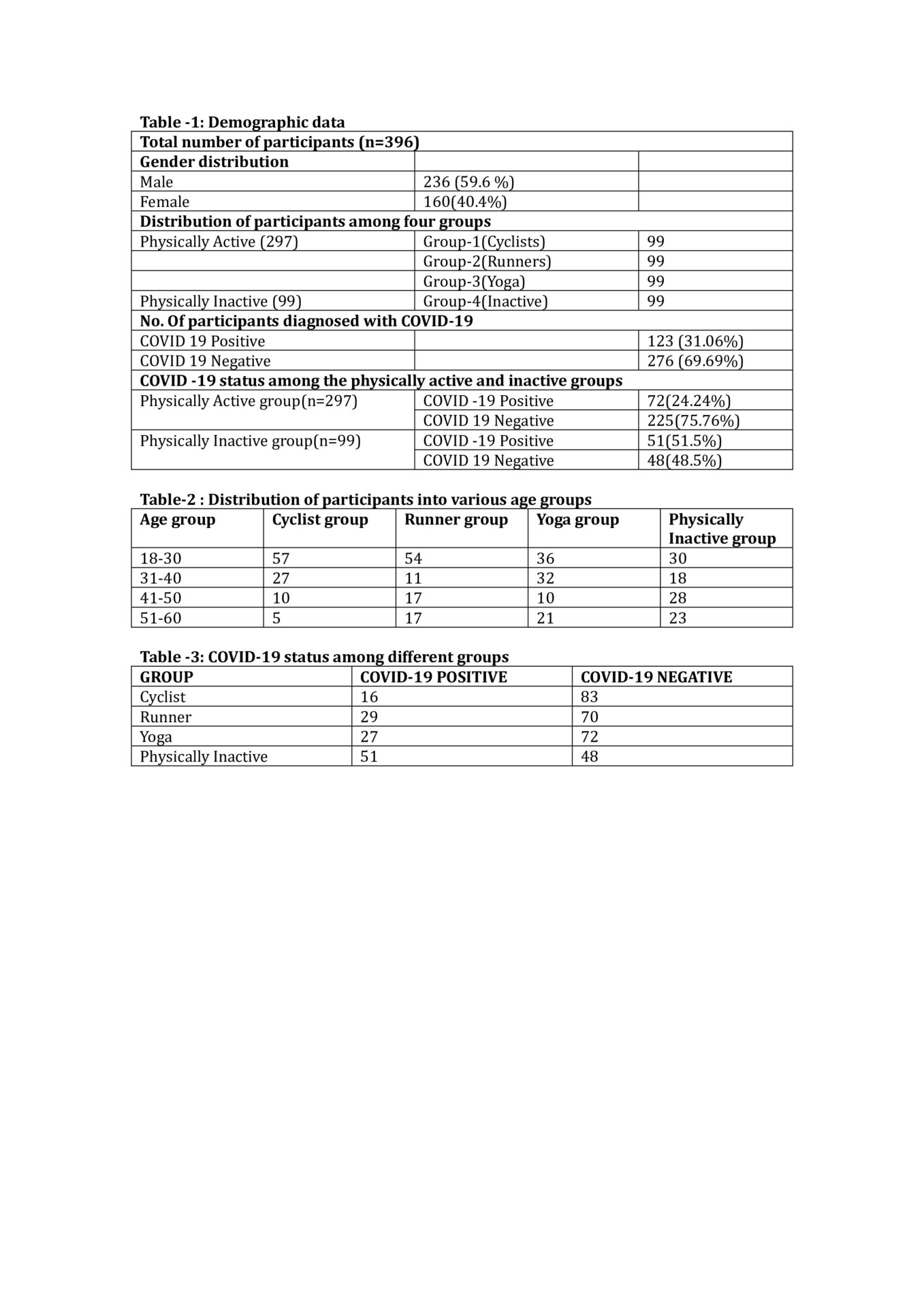COVID-19 was first reported in Wuhan, China, and subsequently spread worldwide. There were numerous restrictions on daily life activities including lifestyles, social distancing, isolation, and access to many forms of exercise and home confinement. (1). These activities have health benefits like it enhances the immune system which is the need of the hour during the COVID-19 pandemic. (2) There is very little data regarding the occurrence of COVID-19 among marathon runners, cyclists, and yoga practitioners. The study aimed to find the prevalence of COVID-19 among physically active and physically in active individuals and to compare the prevalence of COVID-19 among physically active and physically inactive individuals. Material and methods: After obtaining the approval from Institutional Ethical Committee, the study was started. (AIIMS/BBN/IEC/DEC/2021/133-A)Physically active individuals were selected as per the Global Recommendations on Physical Activity for Health 2010, in the age group of 18-60 years. (3) Physically active individuals included runners, Yoga practitioners, and cyclists from the Hyderabad club. A pre-validated questionnaire was circulated among the groups through Google Forms. Results on continuous measurements are presented as mean ± standard deviation and categorical measurements were presented as numbers or percentages. Data were analyzed using the Statistical Package for the Social Sciences version 25.0 (Statistical Package for the Social Sciences Inc., Chicago, IL, USA). Significance was assessed at 5% level of significance. Data were entered into Microsoft Excel versus 2019 and statistical analyses were performed using Chi-square test. P ≤ 0.05 was considered statistically significant. Results: The proportion of COVID-19 affected was high among the physically inactive group (51.5%) when compared to the active group (24.24%). The proportion of subjects hospitalized is high among the physically inactive group when compared with the physically active group. Conclusion: Physical activity is a barrier to COVID-19 infections and enhances the immune system. (4,5). The physical activity has to be prioritized by public health agencies and incorporated into routine medical care.
The Biomedical Basis of Elite Performance 2024 (University of Nottingham, UK) (2024) Proc Physiol Soc 62, C21
Poster Communications: COVID-19 among Physically active and Physically in active individuals
DR M KALPANA MEDALA1
1ALL INDIA INSTITUTE OF MEDICAL SCIENCES BIBINAGAR INDIA
View other abstracts by:
Where applicable, experiments conform with Society ethical requirements.

